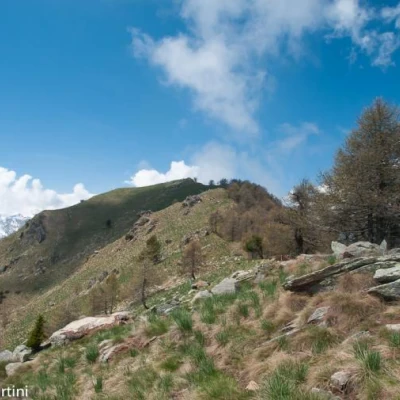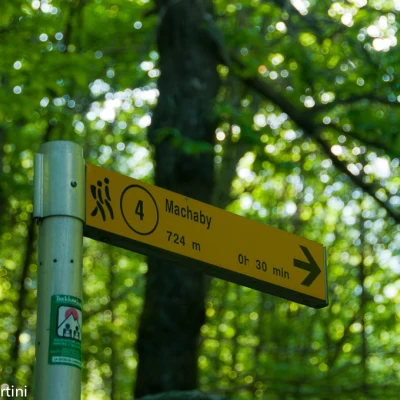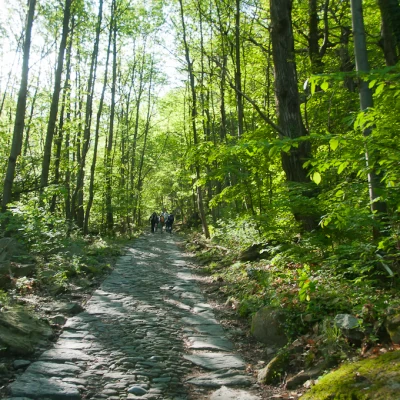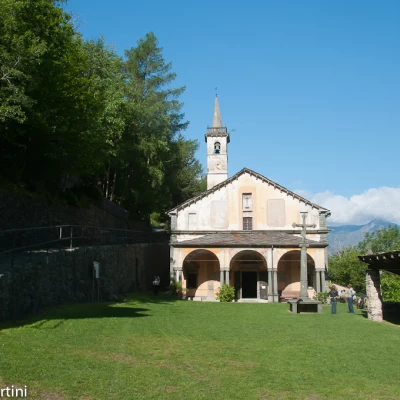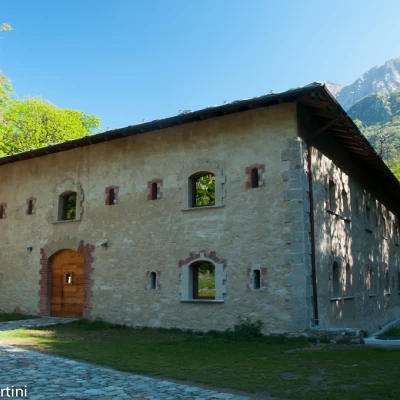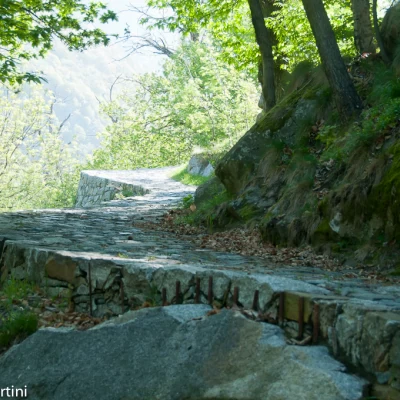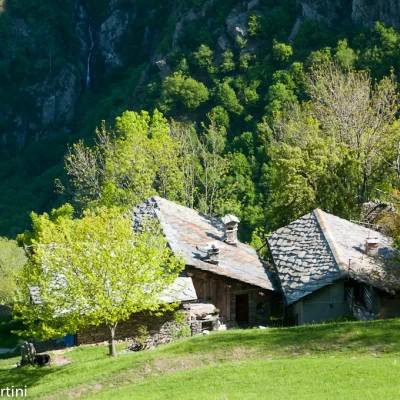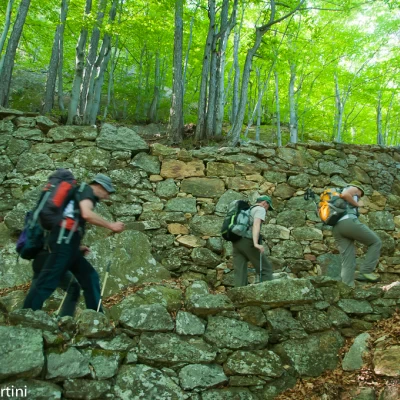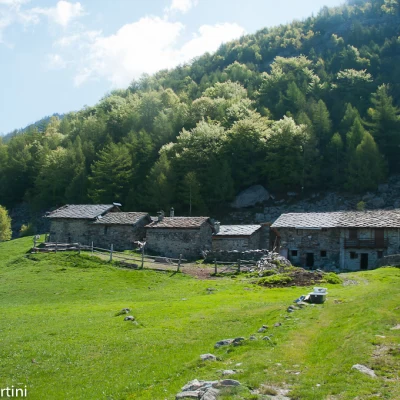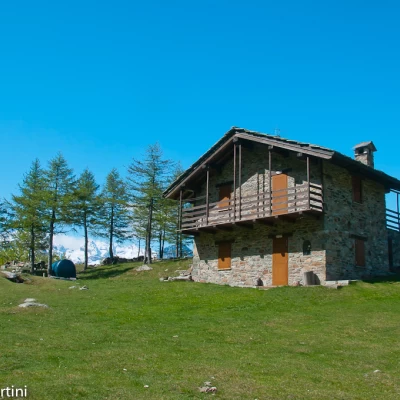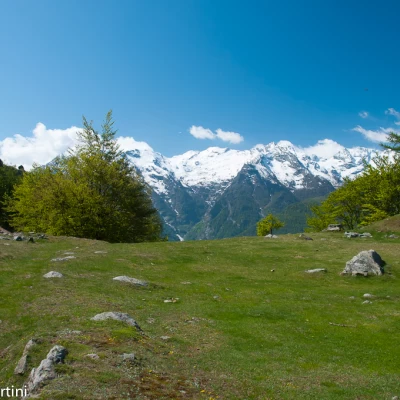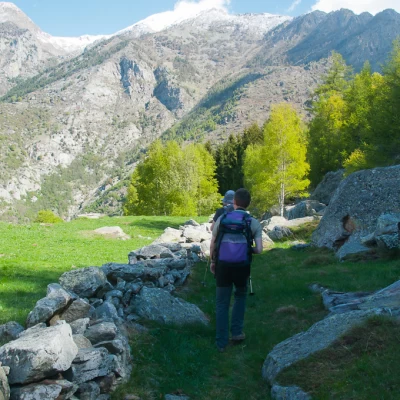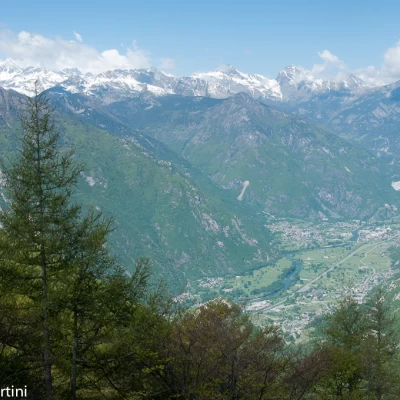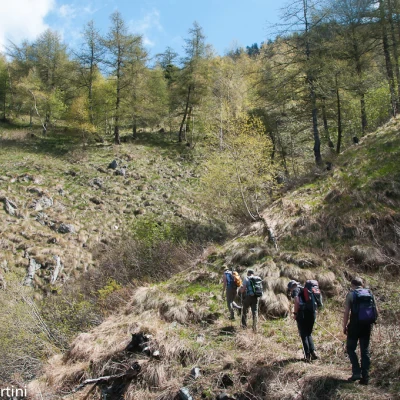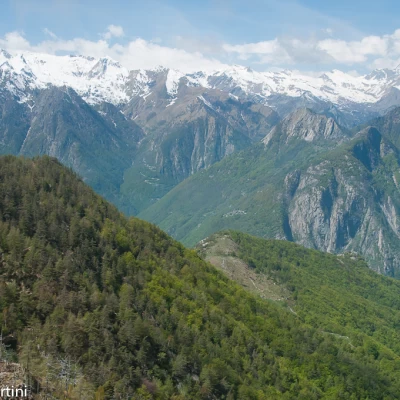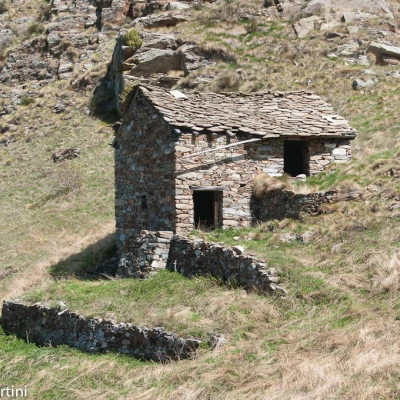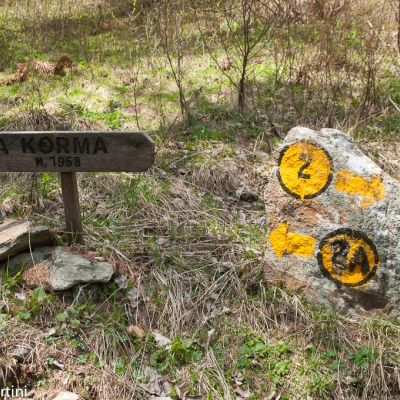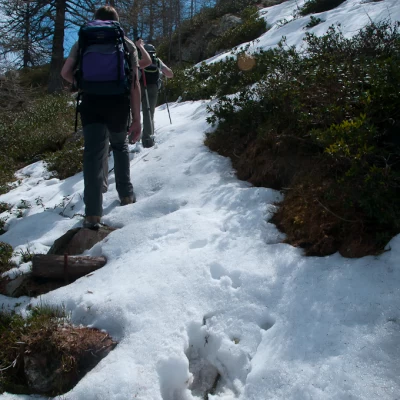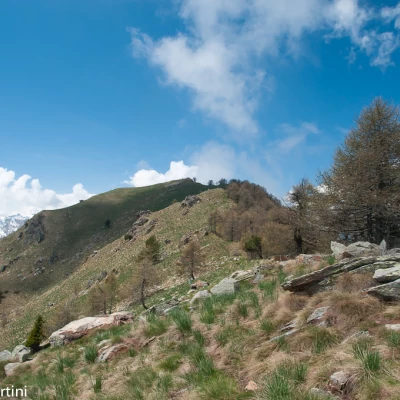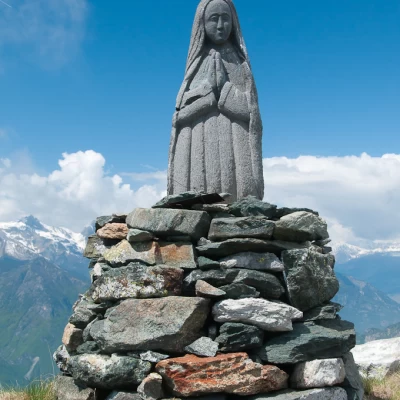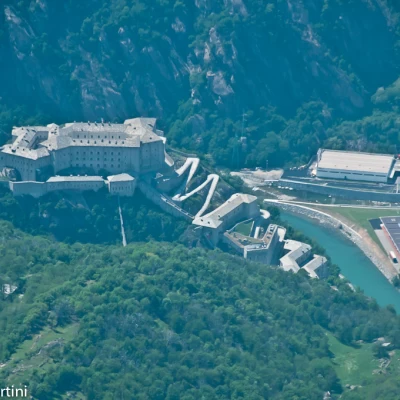Croix Corma, from the Machaby car park
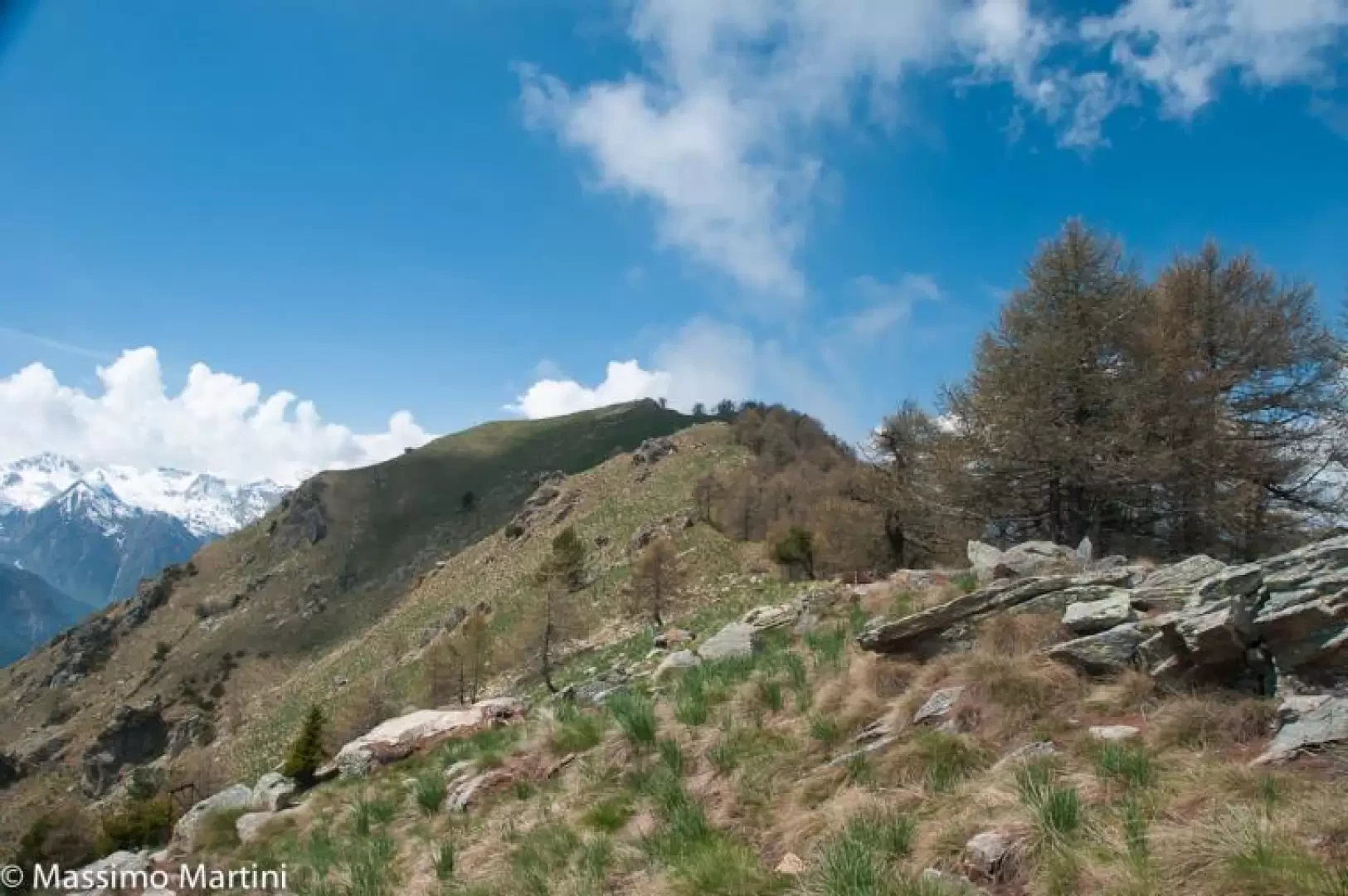
Access
Leaving the motorway at the Verrès exit, turn right onto the main road in the direction of Turin. Pass the village of Verrès and, after 4.5 kilometres, you will reach the Arnad roundabout. Take the second exit and continue towards the town unable to parse following the signs for the Machaby sanctuary. Go up the municipal road for about 2 kilometres, skirting the complex of the Romanesque church of San Martino and passing near the Valleise Castle until you come to the fork for the Machaby parking area: go straight on for about 700 metres until you come to a large car park where you can leave your car. In the area there is a panel with the indications of the municipal path network.
How to get there with GMaps
How to get there with Apple Maps
Introduction
The ascent to the Croix Corma from the Arnad side is decidedly long and with a considerable difference in altitude; however, the military trenches up to the Col de la Cou and the subsequent path up to the Col Fenêtre have excellent levelling, which somewhat mitigate the overall effort. From the summit, you can appreciate a significant panorama over the lower Aosta Valley and in particular the side valleys of Donnas, which are difficult to see from below.
Description
0h00' We descend the road again until we come to a signpost indicating the path: here we turn left and take the wide paved mule track that leads to Machaby. You will soon come across a "tzapelet" (an old oratory with frescoes used in processions) and continue past a stream on a wide wooden bridge. Continue along the paved road as you enter the chestnut forest (Castanea sativa). After a turn to the right, continue for a few minutes until you reach the Machaby Sanctuary (691m): the edifice, built in the 15th century, is dedicated to Our Lady of the Snows with an annual festival every 5th August.
0h15' We continue along the little road and in a few minutes we reach, near another oratory, the locality known as "Pradouegne" (a wide plateau under age-old chestnut trees) and the village of Machaby: a short visit to the village to observe the characteristic Dzerby is recommended.
Returning to Pradouegne, you can take advantage of an eno-gastronomic break at Cesarino Bonin's "Lo Dzerby" farmhouse and then continue the route towards the remains of Lieutenant Lucini's fortification (717m, 0h25'). Shortly after the shelter, you come to the fork to descend towards Bard: this path is currently closed by an ordinance of the mayor of Arnad due to the risk of landslides. We proceed along the comfortable road that, with a series of hairpin bends, enters the forest again; every now and then there are panoramic views, especially of the not too distant Paretone, the cradle of free-climbing in Valle d'Aosta. Slowly you reach a small clearing where there are the remains of other military fortifications on a plateau where the village of Arbeadze once stood (824m, 0h50'). Here we leave the small road and begin to proceed along the beautiful paved mule track. Along the ascent, we come across a couple of renovated cottages and then enter the chestnut forest again. After a few hairpin bends, we come to a fork in the road (899m, 1h05'): a faint trail branches off to the right of a hairpin bend to reach the base of the famous Pilastro Lomasti. Obviously, this deviation is overlooked and we proceed further into the forest, where the mule track makes an endless series of turns, always supported by impeccable dry stone walls. After a thousand metres, the chestnut tree gives way to beech (Fagus sylvatica) and birch and, shortly afterwards, the mule track gives way to a grassy road. You slowly approach the pass and the vegetation thins out until you reach the wide clearing before the village of La Cou. Go past a small wooden fountain and finally reach La Cou (1379m, 2h20').
Cross the small hamlet to the right of it where you take a slightly downhill mule track. At the end of the descent, enter the forest and begin a long stretch with a few ups and downs into the valley. Follow the relief of the slope with a succession of ravines while the path occasionally undergoes short ups and downs. After passing a short section of pathway set up on a stone and wooden footbridge with a railing, we leave the beech forest to cross a short grassy knoll. The path slightly steepens and bridges the slight difference in altitude up to the pass with short, non-demanding climbs. The pass is now in sight, skirting a stone farmhouse and finally reaching the Col Fenêtre (1673m, 3h00'), where there is a large stone cairn.
From the pass, descend for about fifty metres before meeting the crossroads leading to the Croix Corma. Turn right and climb up the path, which has recently been renovated, and with a steep upward slope quickly gains altitude. Pass over a short rocky ledge, well arranged with wooden steps, and finish the ascent by joining the grassy saddle that abuts Mont Arpia. Turn right and continue on the grassy ridge passing near a cable car arrival station. One last short effort and you reach the summit of the Croix Corma (1958m, 4h30') marked by a pretty little stone madonnina. Just below, on the antecedent from the crest of Mont Beuby, are two wooden crosses.
